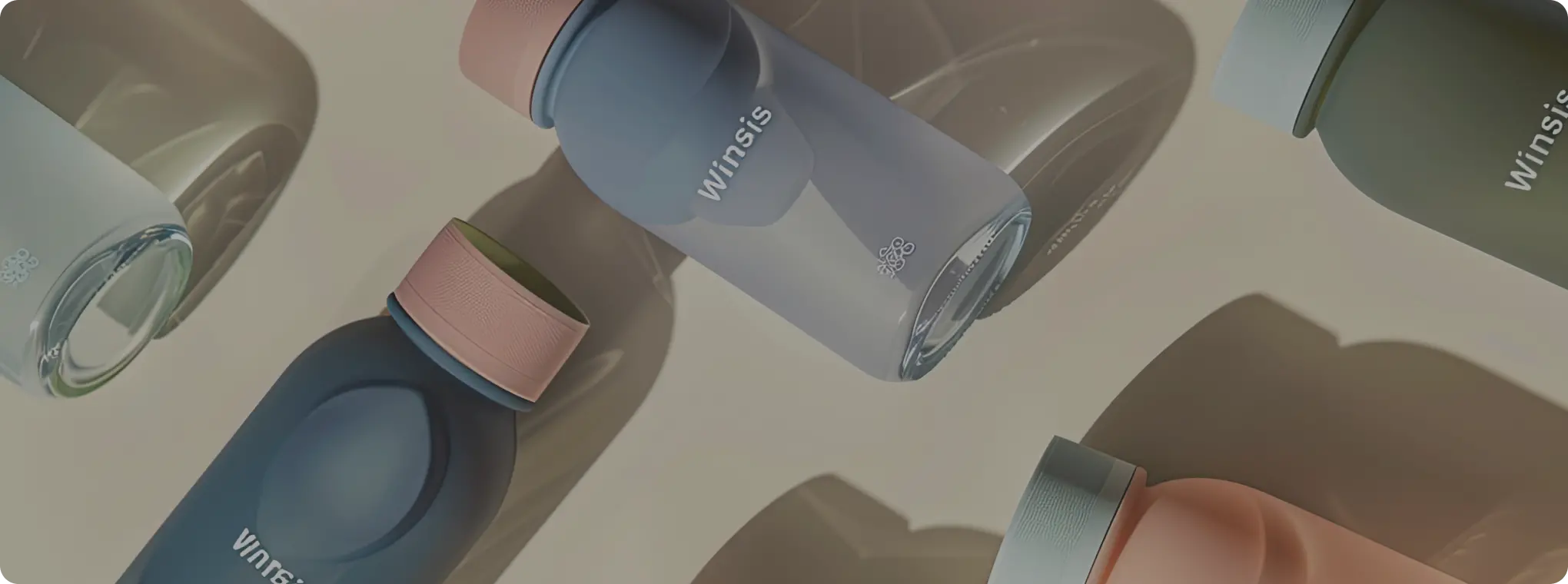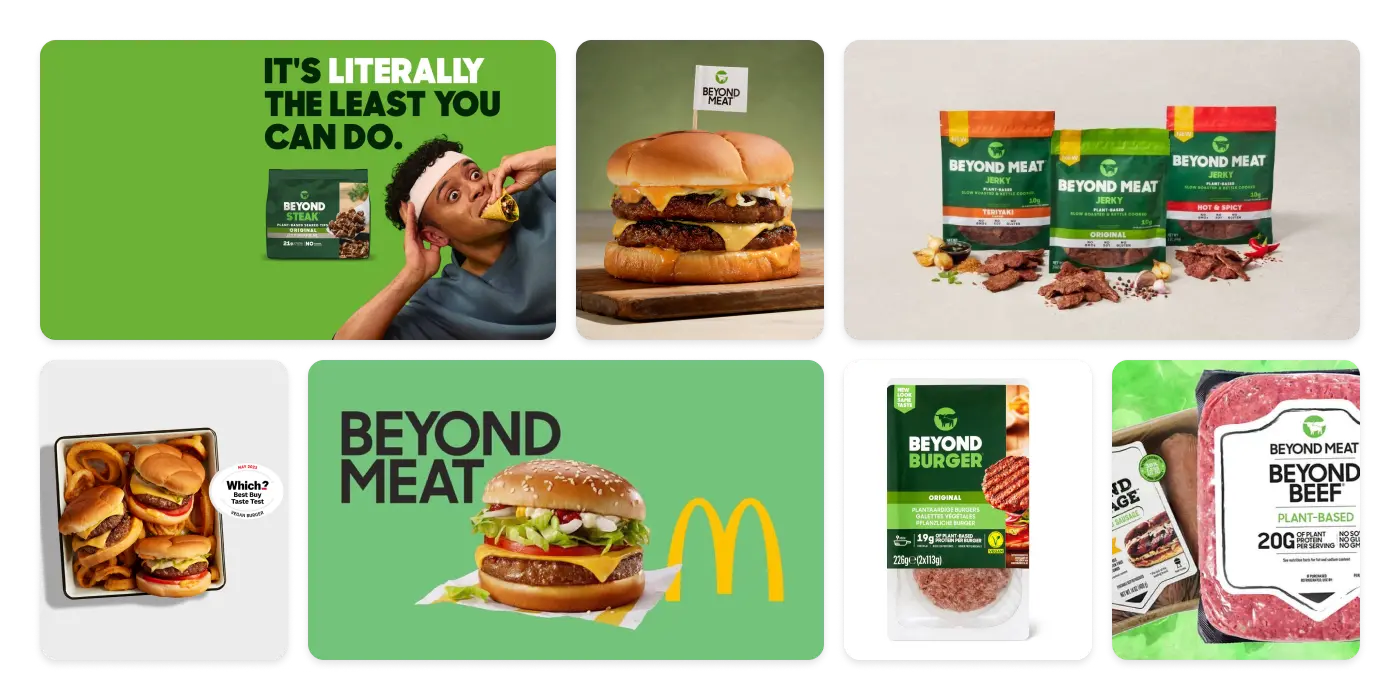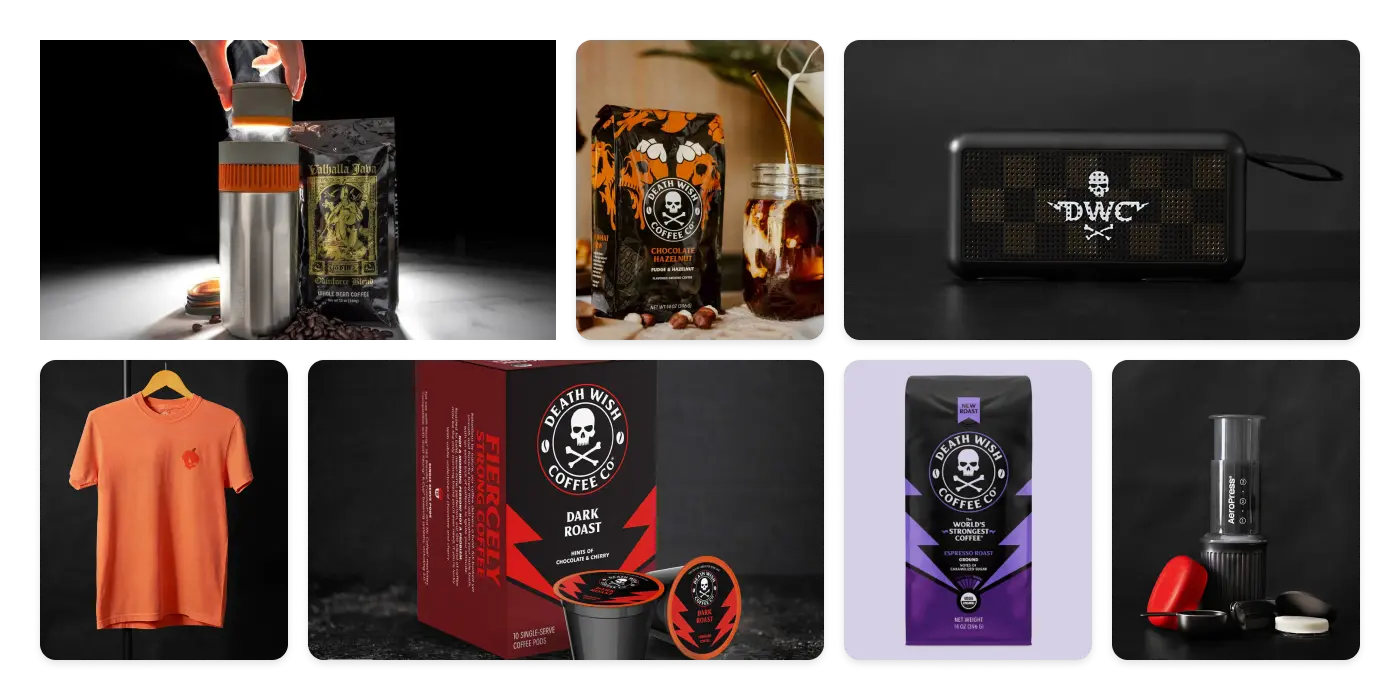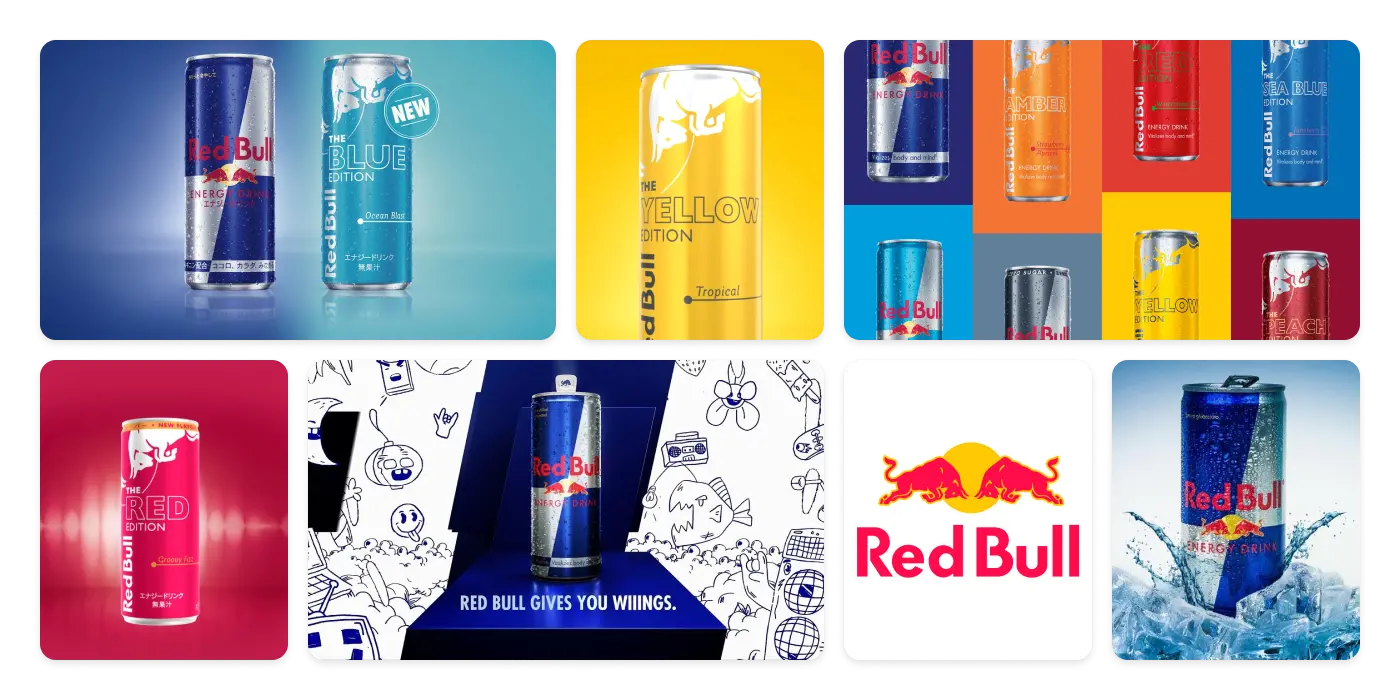
Creative Branding — Nuanced Recap
The enthusiasm around creative branding is not something surprising as every day dozens of new brands are popping up which is further pushing the competitiveness of the market. Businesses are looking for new, innovative ways to attract their audiences and stand out against the crowd with what they have to offer, recognizing that inventiveness is the best approach.
Still, when discussing original branding, confusion can be nonetheless present as it can feel like grasping at straws without a concrete foundation. This is why we have done our due diligence and compiled an overview to explain to you all of the nuances associated with this topic and equip you with the essential knowledge to make informed decisions for your brand.
In this read, you will discover what branding with creativity actually means, why it is so important for businesses as well as give you practical examples to go off of and information on current trends to keep in mind. Let’s get straight to it.
What is creative branding?
Making branding truly creative is a practice that ensures your business is recognizable on the market against thousands of others alike. On top of that, it is akin to building a bridge between a corporation and its customers in a way that engages them in a light and entertaining way.

The infusion of creativity into branding can be defined within its brand voice, compelling identity, appealing logo design and so much more. At its core, the principle of creativity is to convey the value proposition of what you offer that makes users want to choose you over your competitors and come back again, building long-lasting loyalty.
A strong focus on innovation within creative branding design is aimed at crafting unique experiences for the audience so that every time they interact with your business, a memorable impression forms in their minds. One of the go-to tactics for this is compelling storytelling, where the brand connects with its consumers through meaningful narratives that strike a cord, no matter if it is through content or advertising.
With the aid of professional branding services, you are capable of fine-tuning experiential digital events and maintaining a consistent and uniform brand positioning across all of your channels, such as social media and products.
Thinking outside of the box and carefully monitoring the perception of your brand through the eyes of the customers to adjust to their demands are essential practices to keep your business on top of the game. By combining them with creative branding strategies, including visual and verbal identities you are able to achieve new heights that are going to boost the performance of your organisation.
Now that we are on the same page about what the term of branding with creativity in mind means we can safely move forward with other pressing nuances of this topic, namely the importance of it for your brand.
Importance of originality for solid branding
With the market being overfilled with uncountable propositions and offerings that are similar at the core, it can get unsurprisingly easy to get in the crowd. This inevitably stipulates brands to find creative ways to bring their originality to the table and become just as competitive as others in the game.
Failing to recognize such a sticky situation can be a nail in the coffin that detriments the entire business, so we feel that it is our duty to shed light on the sheer importance of thinking creatively when crafting your branding with five major points.

Unique stance on the market.
The main purpose of creative branding, as we mentioned earlier, is to take a stance on the market and differentiate yourself from a multiplicity of other corporations offering similar or identical products. Being innovational and never-before-seen in terms of how you build your brand elements can be a pivotal point in putting your name on the map.
By separating yourself from the top competitors with a uniquely crafted brand positioning and storytelling, you not only put your business on the same level but further separate the brand into a completely new category.
Authenticity.
All of the greatest brands out there put an authentic history and messaging upfront because building parasocial relationships with customers based on genuine stories is yet to be topped as a solid strategy. The audiences are no longer interested in being sold on unachievable experiences and fake inspirational narratives.
It is not just empty words as data support this, in particular research by Stackla is evidently showing that 88% of consumers report that authenticity is very important when it comes to deciding which brand they want to support and buy from, so this point should never be neglected
Emotional perception of users.
Connecting with the audience on an emotional level is one of the greatest strengths a corporation can have by implementing original ideas into its branding. You might have often heard that brand positioning is not about selling the products but selling the experience you can provide to the user which will deliver an elevated and enjoyable feeling when using it.
You are capable of carefully selecting the appropriate creative branding services such as brand consulting to pick and choose which elements of your core value proposition will resonate with your audience the most and translate into an emotional attachment.
Long-lasting brand loyalty.
Innovatory approaches to creating original branding, as we have discussed above, can pave the way for structuring relationships that make customers want to keep coming back again and again. You, as a business owner, must know what that means intuitively as it transforms into brand loyalty over many years to come which every organisation should be striving for.
Building a net of a dedicated fan base can be what will be keeping the brand afloat even in its most turbulent times, relying on the audience to stick with the provider through all of the hurdles and support them.
Intellectual property.
Closing up on a more technical note, we want to highlight a point that is often overlooked by businesses. That is the originality of the branding which is not repeated through numerous other businesses can claim its own intellectual property rights which make you the sole owner of the unique approaches you have taken within your strategy.
What separates some of the creative brands out there is their fool-proof ability to dismantle any plagiarism claims that come their way by standing their ground that their branding is completely unique and individual to their corporation. As you can see, it is a hidden benefit that is hard to pass by.
Branding with creativity examples
Now that you know why creativity and innovation are so valuable for brands of any walk of life, you can shift the gears toward shaping a more unique experience, but it can be complex to hit the ground running if you are still unsure how to make your offering original. In that case, looking at the tried-and-true illustrations of brands that have succeeded in creativity can be your golden ticket.
There are certainly numerous creative branding ideas to draw inspiration from so we have picked five of the most prominent examples, both from the global brands and medium-sized businesses to get a visual of how they present themselves to the audiences.
Starbucks is the most recognisable coffee brand in the entire world and their approach to branding is definitely to thank for that. First and foremost, their iconic logo is distinguishable at first glance and, while not exactly minimalistic, the blend of a unique shade of green and white strikes the memory.

Beyond that, Starbucks has succeeded in the approach of selling an experience rather than the coffee itself, carefully curating their messaging and offering seasonal deals, stimulating the fear of missing out. In recent years, the corporation has also leaned heavily into branding for sustainability with a focus on reducing the carbon footprint within their sourcing and packaging.
Coca-Cola was first introduced on May 8, 1886 which makes it now a centuries-old staple in people’s day-to-day lives. The simplicity of their offer can count toward the greatest creative branding examples as initially it was served as a tonic for common ailments, now transformed into a go-to soda for the majority of the population.

Although Coca-Cola has changed its logo and packaging over the decades, it has maintained its distinct image and consistent family-friendly identity which surpasses time, weaving the brand’s way into cultural relevance that is yet to simmer down.
Beyond Meat is a relatively younger brand, founded in 2009 by Ethan Brown with a determined mission of combating climate change. It is not hard to see that they have clearly identified their target audience and fine-tuned their messaging to shift the tide toward plant-based meat that is as equally delicious.

What sticks out is their storytelling technique which is firmly propelled by data and research as well as a purpose-driven branding strategy. The creativity in their approach also lies in the fact that their audience is prone to expanding since they not only cater to strict vegans but also customers who are interested in trying out more sustainable food.
Death Wish Coffee is mostly a digital brand selling primarily online, but what makes it different from other coffee businesses is that it ditched customary sophisticated branding for a more grundy identity. By leaning heavily into more humourous and light-hearted messaging, despite a provoking name, it has become a creative brand that immediately stands out.

However, the most defining thing about its branding is the event-driven visibility. Did you know that Death Wish Coffee went to space? On June 29, 2018, the company sent a special version of their coffee to an International Space Station, and their streak continued from then on with partnerships with NASCAR and other organisations.
Redbull is a clear example of brands that go way beyond with their creativity. After all, almost every person on the planet can recall at least one of their unique commercials and quote that the energy drink “gives you wings.”

The angle at which Redbull prospers the most is its digital marketing and an image of a bold and daredevil brand, weaving in associations with active sports and invigorated young communities. Not to mention their colourful and bright packaging that instantly catches the eye of consumers.
Trends in innovation branding to watch
Having discussed the several distinct approaches some of the businesses implement into their branding, there is no doubt left about what you can do for yourself. In order to further streamline your thinking process, it would be the best time to expand on a few of the current trends you are capable of capitalising on.

By joining forces with qualified brand design experts, you can achieve success by leveraging the following demands of the audience.
-
Sustainability and eco-friendliness. While this wave may not be as inventive, it is still a large cut of what users want to see from creative branding. The need for environment-conscious brands is far from over and, in a way, is becoming a standard practice without which you cannot go far.
Depending on the type of business you are running, you can consider implementing practices such as biodegradable packaging, eco-friendly resourcing, reusable products and so on.
-
Diversity and inclusivity. Many brands to this day still neglect the issue of inclusivity within their branding by which they unknowingly push away a portion of their users. The talk is not only about the diversity of ethnicities to which you market or use models in promotion; it is also about the inclusivity of disabilities, unique appearances, etc.
It does not take much of a toll on your campaigns to include audiences of any shape and form since it only potentially increases your outreach. To put it into perspective, as stated by Statista, 30% of female consumers consider diversity very important.
-
Reality over editing. When crafting your creative branding design, be sure to consider that most consumers nowadays are tired of seeing near-perfect images and unrealistic standards posed onto them. The days of marketing a problem-solving solution using over-edited models are long gone, replaced by the desire to witness the effectiveness of the product on natural human beings.
The bright side of this trend for your business is that you don’t need to spend heinous budgets on editing and instead prioritise realism, no matter how imperfect it may seem.
-
Focus on the community. Community-driven branding is prevailing over other types of marketing since you put effort into building a dedicated base of customers and not putting all resources into getting your name out there. Generating loyalty can bring more to the table in the long run as you become a trusted tool for the audience.
Providing special offers to users who regularly engage with your brand works better than trying to attract a large net of new customers of whom you are unsure of again and again.
-
Leveraging technologies. Turning our attention to a more technical side of branding trends, the digital world evolves especially fast, leaving those who neglect technologies that help your business grow to bite the dust. Nowadays, you have the option to leverage tools like artificial intelligence to deliver more personalised and tailored experiences to consumers.
Implementation of ethical data collection can put forward more data-driven insights into the perception of users regarding your brand, get to the bottom of what is lacking and find ways to improve them on the go.
Points to sum up
Wrapping your head around creativity and innovatory branding is a bullet you have to bite in order to get to the top of the food chain. On the bright side, there is nothing stopping you now since you have been equipped with knowledge of how to set up your strategy right and, with the assistance of a creative branding agency, the doors are open for future endeavours.
In our guide, you have discovered the meaning behind branding with creativity, how it can take your business to the next level, traversed exemplary cases and learned which trends to incorporate into your branding approach. If you want to partner with the best provider to trust the job, use our platform to find companies that fit your needs.

